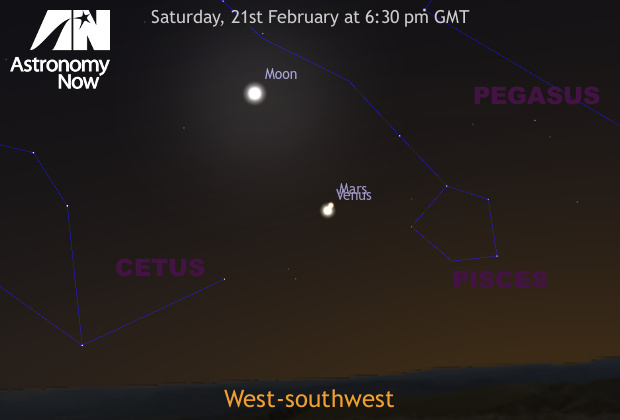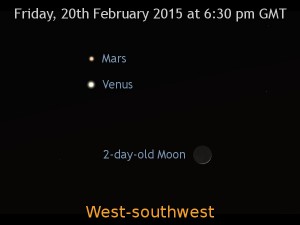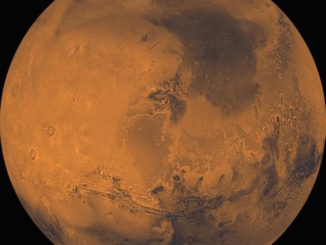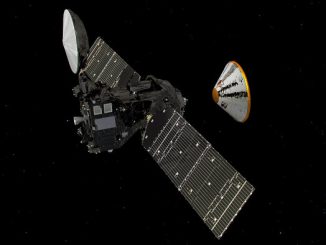
The direction to look is low to the west-southwest horizon and the best time each evening is 1—1¼ hours after sunset, which is about 6:30 pm GMT for the centre of the British Isles (you can obtain sunset times from our online Almanac). If you leave it much later then you may see both Mars and Venus in a dark sky, but they will be much closer to the horizon.
The closing gap between Venus and Mars is, of course, merely a line of sight effect — the Red Planet is furthest away. The difference in brightness between the two worlds is also considerable: at magnitude -3.9, Venus is 120 times brighter than magnitude +1.3 Mars!
On February 14th, Mars was 2.17 astronomical units (202 million miles; 325 million kilometres) from Earth, while Venus was 1.45 AU (135 million miles; 217 million kilometres) distant. By the 21st, when the two planets will appear just 28 arcminutes apart — less than the diameter of the Full Moon — the distance to Mars will have grown to 2.2 AU (205 million miles; 330 million kilometres), while Venus will be somewhat closer at 1.42 AU (132 million miles; 212 million kilometres).

So, for this planetary conjunction at least, the best way to appreciate the spectacle is with your unaided eyes or a pair of binoculars. Clear skies!
Inside the magazine
You can find out more about Venus and Mars in the February edition of Astronomy Now in addition to a full observing guide to the night sky.
Never miss an issue by subscribing to the UK’s biggest astronomy magazine. Also available for iPad/iPhone and Android devices.




